The Planetary Society • March 20, 2020
A Conversation with Ann Druyan and a Fix for InSight
The Downlink: Weekly resources to fuel your love of space

ESA ©2005 MPS for OSIRIS Team MPS/UPD/LAM/IAA/RSSD/INTA/ UPM/DASP/IDA
Rosetta view of Earth's night side
The European Space Agency’s Rosetta spacecraft snapped this image of the Earth’s night side during a 2007 slingshot past our planet. Rosetta was over the Indian Ocean at the time; India is visible at center.
Space Snapshot
The European Space Agency’s Rosetta spacecraft snapped this image of the Earth’s night side during a 2007 slingshot past our planet. Rosetta was over the Indian Ocean at the time; India is visible at center.
As a global society, we achieve great things when we work together. Right now, due to COVID-19, we have to work together by staying apart. Whether you're in isolation or not, consider taking this time to explore what we know about this cosmos of ours. There is much to be known.
You love space, now take action
This weekly newsletter is your toolkit to learn more about space, share information with your friends and family, and take direct action to support exploration. Anyone can subscribe at planetary.org/connect to receive it as a weekly email.
Facts Worth Sharing
All of our solar system’s asteroids combined would still be smaller than the Earth’s Moon.
Mission Briefings
 Like the rest of the world, the space community has been affected by COVID-19. All NASA employees except mission-essential personnel are working remotely. Europe has taken similar measures and suspended its launches. Even Buzz Aldrin is quarantined at home. It’s unclear how severely COVID-19 will affect upcoming mission schedules, but NASA officials say at least one mission is still on schedule for now: NASA’s Perseverance rover.
Like the rest of the world, the space community has been affected by COVID-19. All NASA employees except mission-essential personnel are working remotely. Europe has taken similar measures and suspended its launches. Even Buzz Aldrin is quarantined at home. It’s unclear how severely COVID-19 will affect upcoming mission schedules, but NASA officials say at least one mission is still on schedule for now: NASA’s Perseverance rover.
 There are signs that NASA’s latest efforts to save the heat-flow probe aboard its Mars InSight lander may be working. The self-hammering instrument, known as the mole, has unsuccessfully been trying to bury itself since March 2019. Engineers are using InSight’s robotic scoop to press down on the top of the mole while it hammers (pictured, image credit: NASA/JPL).
There are signs that NASA’s latest efforts to save the heat-flow probe aboard its Mars InSight lander may be working. The self-hammering instrument, known as the mole, has unsuccessfully been trying to bury itself since March 2019. Engineers are using InSight’s robotic scoop to press down on the top of the mole while it hammers (pictured, image credit: NASA/JPL).
 NASA sent out a media accreditation notice for the first orbital human spaceflight from the U.S. since the end of the space shuttle program in 2011. As soon as mid-to-late May, a Crew Dragon carrying astronauts Bob Behnken and Doug Hurley will launch to the International Space Station. The highly anticipated flight will mark the end of NASA’s sole reliance on the Russian Soyuz vehicle for station crew transport.
NASA sent out a media accreditation notice for the first orbital human spaceflight from the U.S. since the end of the space shuttle program in 2011. As soon as mid-to-late May, a Crew Dragon carrying astronauts Bob Behnken and Doug Hurley will launch to the International Space Station. The highly anticipated flight will mark the end of NASA’s sole reliance on the Russian Soyuz vehicle for station crew transport.
 The inaugural flight of China’s Long March 7A rocket ended in failure, apparently destroying a classified satellite in the process. It’s unclear how the incident will impact other areas of China’s space program. The Long March 5, which will be needed to launch China’s first Mars mission this summer, uses common first-stage components but different upper-stage engines.
The inaugural flight of China’s Long March 7A rocket ended in failure, apparently destroying a classified satellite in the process. It’s unclear how the incident will impact other areas of China’s space program. The Long March 5, which will be needed to launch China’s first Mars mission this summer, uses common first-stage components but different upper-stage engines.
 When NASA astronauts make their first flight to the lunar surface as part of the agency’s Artemis program—currently scheduled for 2024—they won’t be making a pit stop at the Gateway, a small, yet-to-be-built lunar space station. NASA officials say they are still committed to building the Gateway later, but that it is no longer in the “critical path” for the first Moon landing.
When NASA astronauts make their first flight to the lunar surface as part of the agency’s Artemis program—currently scheduled for 2024—they won’t be making a pit stop at the Gateway, a small, yet-to-be-built lunar space station. NASA officials say they are still committed to building the Gateway later, but that it is no longer in the “critical path” for the first Moon landing.
 Correction: Last week, The Downlink reported that NASA’s Orion spacecraft was back at Kennedy Space Center in Florida, following several months of testing in Ohio ahead of a 2021 test flight. NASA has since removed the article we linked to, and clarified that the spacecraft will not ship to Florida until 23 March.
Correction: Last week, The Downlink reported that NASA’s Orion spacecraft was back at Kennedy Space Center in Florida, following several months of testing in Ohio ahead of a 2021 test flight. NASA has since removed the article we linked to, and clarified that the spacecraft will not ship to Florida until 23 March.
From The Planetary Society
In case you missed it, last week’s episode of Planetary Radio features a conversation with the renowned science communicator Ann Druyan about the latest season of Cosmos: Possible Worlds, and her new companion book of the same name. You can also read a transcript of the episode. Pictured: A scene from the season premiere depicts astronauts descending to the moon of a possible world.
What’s Up
 Over the next week you’ll be able to see Venus bright in the sky after sunset. Mars, Jupiter, and Saturn will be visible in the predawn sky. Uranus will also be visible after sunset, but you’ll need binoculars or a telescope to spot it.
Over the next week you’ll be able to see Venus bright in the sky after sunset. Mars, Jupiter, and Saturn will be visible in the predawn sky. Uranus will also be visible after sunset, but you’ll need binoculars or a telescope to spot it.
Wow of the Week
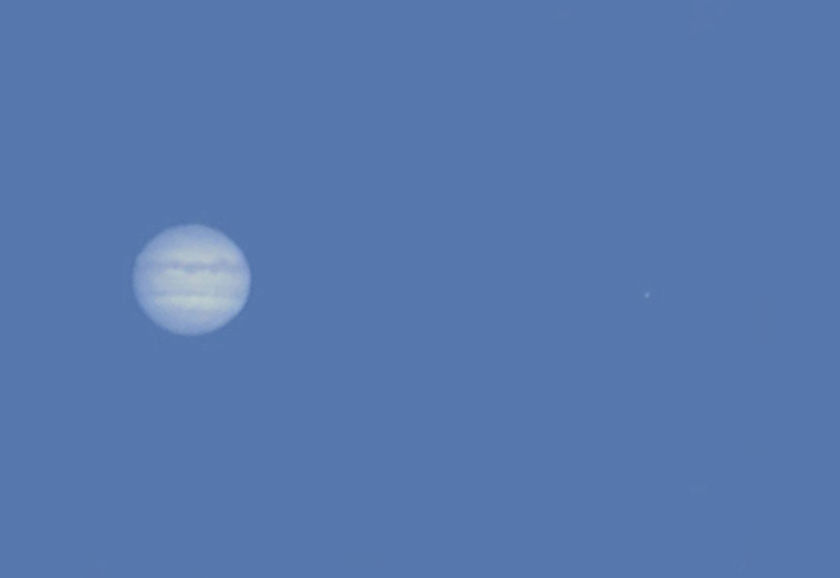
The Rogue Astronaut
Jupiter in Daylight
If you know where to look, you can find planets in the daytime. This image of Jupiter was captured by
The Rogue Astronautin 2020. Jupiter's moon Europa is the dot seen at the right.
From The Rogue Astronaut on Twitter: “Harder to find than at night (that’s an understatement!) but if you know where to look, the planets, in this case Jupiter, can be seen during daylight hours!” Believe it or not, you can even see one of Jupiter’s moons in this image: the tiny dot to the right of Jupiter is its moon Europa.
Do you have a suggestion for the Wow of the Week? We’re looking for space-related art, music, gadgets, quotes, fashion, burning questions, sci-fi passages, or anything else that will make our readers go “Wow!” Send us your idea by replying to this email.

Let's Change the World
Become a member of The Planetary Society and together we will create the future of space exploration.
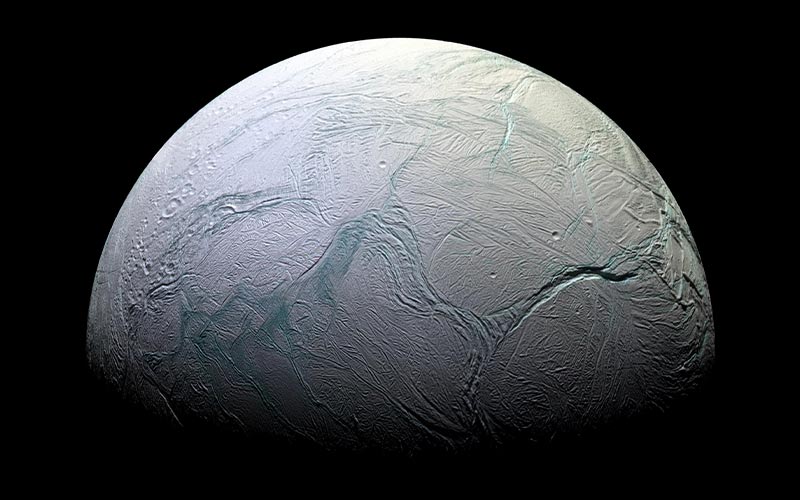
The Planetary Fund
Help advance robotic and human space exploration, defend our planet, and search for life.
from Planetary Society Blog https://ift.tt/2xVqpd2
via IFTTT


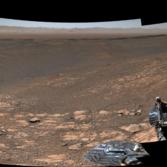
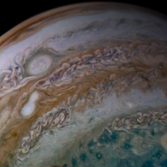
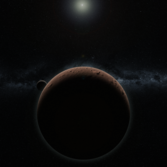
沒有留言:
張貼留言